#leptotyphlopidae
Text

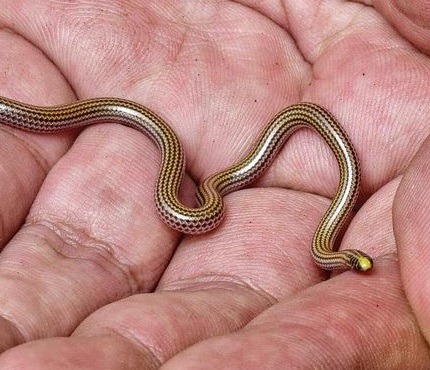
Blind Snake (Epictia cf. albipuncta), family Leptotyphlopidae, Bolivia
photograph by Eduardo Navia
4K notes
·
View notes
Text
Les araignées mangent les serpents (aussi)
Nouvel article publié sur https://www.2tout2rien.fr/les-araignees-mangent-les-serpents-aussi/
Les araignées mangent les serpents (aussi)

#araignée#australie#Bothrops atrox#Cemophora coccinea#couleuvre#crotale#etude#fer-de-lance#Indotyphlops braminus#Latrodectus geometricus#Latrodectus geometryus#Latrodectus hesperus#Leptotyphlopidae#mexique#Micruroides euryxanthus#predation#repas#reptile#serpent#Steatoda triangulosa#tarentule#Thamnophis sirtalis#Theraphosa blondi#toile#USA#veuve#veuve noire#animaux
0 notes
Text
Cute Young Alternative Teen Caught Shoplifting Clothes Fucked By Security Guard
Sexy booty teen bends for cock and delights with amateur doggy
Desi college girl Ruhi fcuked by karthik
Big dick guy pounds two tight asian babes Kat Kiss and Allie Ray pussies then facializes them
leidy garcia joven arrecha le encanta el semen en el abdomen
Camilla Amadora da Bunda Gigante
Teacher gay porn gallery Sergio is the buff powerful macho man next
Young girl giving head
CUMTRIBUTE FOR MY SISTER
Bajo la falda de colegiala con calzon negro
#fructokinase#oscillators#oxygenizable#Leptotyphlopidae#Heliogabalize#ontogenically#thameng#monamide#supernationalism#nieshout#entopic#humoring#Kerr#never-ending#hemiolia#wintriness#Ninette#Govt#entomophagous#riflery
0 notes
Photo
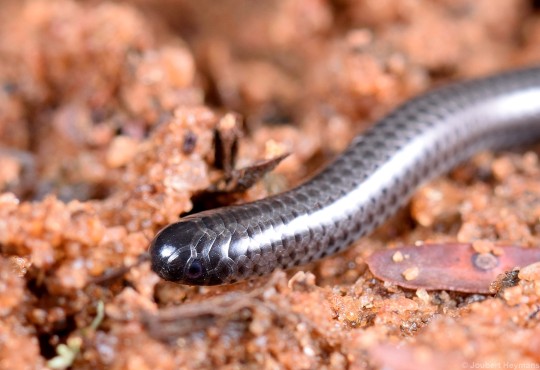
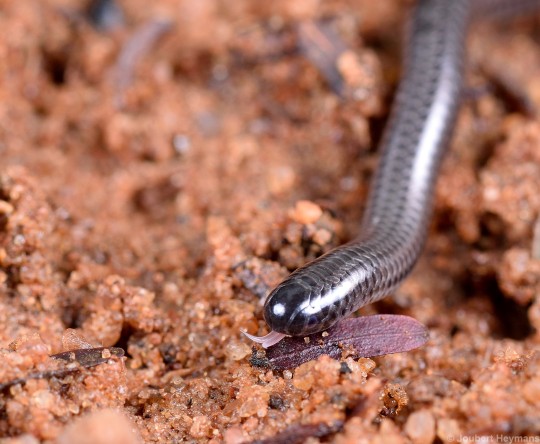

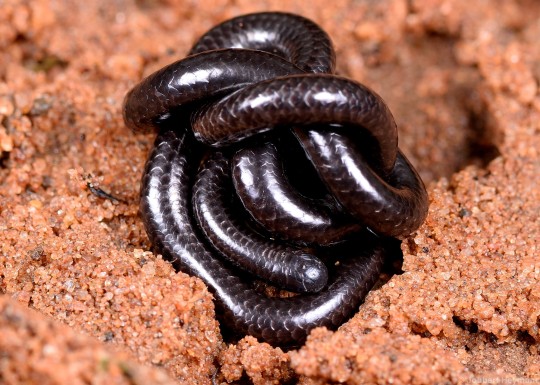
Threadsnake, family Leptotyphlopidae, genus Leptotyphlops species unknown
captured by jouberth
1 note
·
View note
Note
Are flowerpots a kind of thread snake?
Not technically. Flowerpot snakes belong to the family Typhlopidae, while true thread snakes belong to the family Leptotyphlopidae.
They're very closely related and practically indistinguishable to anyone who's not a herpetologist, and even then only to us with a very close look at their scale structure and skeletons; the main differences between the two families are that Leptotyphlopids have a well-developed vestigial pelvic girdle and toothless maxillae (upper jaw bones), while Typhlopids have only the vestigial remnants of the upper hip bones and teeth on their maxillae.
So - technically no, but very close.
38 notes
·
View notes
Text
Sorry i called u a leptotyphlopidae,can we be frens again🥺👉🏽👈🏽
7 notes
·
View notes
Photo
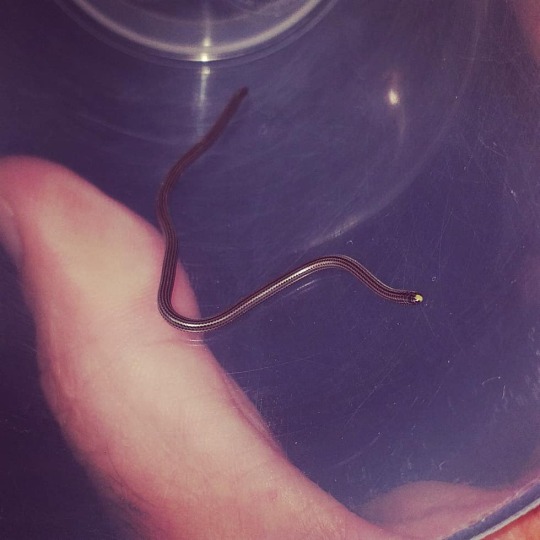
Leptotyphlops é um gênero de cobras não-peçonhentas da família Leptotyphlopidae, conhecidas normalmente popularmente como cobra-de-chumbo, encontrada na América do Sul e do Norte, África, subcontinente indiano e sudoeste da Ásia. Atualmente, 87 espécies são conhecidas. https://www.instagram.com/p/B6jZfdthZ_s/?igshid=qh9l8rgucycu
0 notes
Text
Serpentes
"
As serpentes pertencem à linhagem Lepidosauria (Lepisidos = escamas; sayros = lagartos) e à ordem Squamata, uma linhagem irmã dos crocodilos e aves, assim como os lagartos, e juntos formam a maior linhagem de répteis não-avianos. Atualmente são conhecidas cerca de 3300 espécies. Possuem ancestralidade em comum com os lagartos, e a hipótese é de que as cobras descendem de lagartos fossoriais com olhos reduzidos, ou seja, lagartos que costumavam viver abaixo do nível do solo. Sendo assim, por viverem abaixo do solo não haveria necessidade aparente de membros, logo, as linhagens de lagartos com membros cada vez menores foram sendo selecionadas até que a linhagem sem membros se tornou a predominante. É importante lembrar, que não é só a ausência de membros que separam as serpentes do lagartos, até porquê existem lagartos que não possuem membros e nem por isso são serpentes.
Uma das características mais evidentes das serpentes é ter a pele coberta de escamas, que podem variar de cor e tamanho dependendo da espécie. Essas escamas tornam a pele das cobras praticamente impermeável, e também, confere proteção mecânica.
//<![CDATA[ googletag.cmd.push(function() { googletag.display('dfp-arroba-meio1'); }); //]]>
O corpo é alongado e completamente desprovido de membros e o tamanho, pode variar de 10 cm (Leptotyphlops carlae) à 10 metros. Em tempos pré-históricos existiram serpentes maiores ainda, como a Titanoboa, com mais de 13 metros e mais de uma tonelada.
A sucuri (Eunectes murinus) com seu corpo massivo, alongado e coberto de escamas . Foto: Patrick K. Campbell / Shutterstock.com
As serpentes possuem adaptações na mandíbula para que possam engolir presas grandes, o que é uma consequência do seu crânio, mais flexível que de um lagarto. O crânio de uma serpente possui oito pontos de apoio com articulações que permitem a rotação. Além disso o crânio das serpentes não possui uma das barras temporais, tornando-o ainda mais flexível.
//<![CDATA[ googletag.cmd.push(function() { googletag.display('dfp-arroba-meio2'); }); //]]>
As serpentes são predominantemente terrestres, no entanto existem serpentes aquáticas. Inclusive, uma das serpentes com veneno mais potente do mundo é marinha, a serpente-marinha-de-bico (Hydrophis belcheri), que uma pequena porção da sua toxina é suficiente para matar 1000 pessoas.
Atualmente existem oito linhagens de serpentes no mundo: Leptotyphlopidae (com 117 espécies), Typhlopidae (369), Boidae (52), Pythonidae (41), Viperidae (305), Elapidae (347), Lamprophilidae (299) e Colubridae (1755). A única que não possui nenhum representante no Brasil é a Pythonidae.
Comportamento
As serpentes possuem quimiorreceptores, ou seja, conseguem fazer uma interpretação química do ambientes. Elas movimentam a língua bífida (com duas pontas) para dentro e para fora da boca coletando moléculas de ar e do solo. Ao retrair a língua elas levam para os órgãos vomeronasais localizados no céu da boca (também chamado de órgão de Jacobson) e aí conseguem avaliar o terreno. Elas também podem se orientar e localizar as presas por meio da visão, especialmente as serpentes arborícolas. As serpentes fossoriais, ou seja, as que vivem no subsolo, possuem olhos pouco funcionais e cabeças adaptadas para escavar.
A língua bífida auxilia na interpretação do terreno. Foto: Pranita Thorat / iStock.com
As serpentes-marinhas possuem a cauda em forma de remo, achatadas lateralmente, o que amplifica a sua capacidade natatória e as narinas são localizadas na região dorsal, ao contrário das espécies terrestres que possuem na região lateral e frontal, além de possuírem válvulas que expulsa a água que entra nas narinas.
Apresentam quatro formas de locomoção:
Ondulação lateral: a serpente se locomove movendo a cabeça para os lados e formando curvas com o corpo, sendo assim as curvas geram impulso muscular que a projeta para frente.
Locomoção retilínia: a serpente se projeta para frente através da contração muscular da metade dorsal de seu corpo. Quando os músculos traseiros relaxam ela contrai os dianteiros para que a onda muscular gere a movimentação.
Locomoção concertina: usada em passagens estreitas. A serpente faz alças com o corpo contra as paredes dos buracos e impulsiona a parte anterior do corpo, criando novas alças.
Locomoção lateral: bastante usada por serpentes do deserto, uma vez que devido à ação do vento, o ponto de apoio das serpentes, no caso a areia, muda constantemente. A serpente forma alças com o corpo e as oscila lateralmente.
Reprodução
Serpentes podem ser ovíparas, o que significa que elas botam ovos e os filhotes saem dos mesmos. Vivíparas, ou seja, dão à luz à filhotes já formados e ovovivíparas, nesse caso os ovos são formados mas permanecem dentro da serpente até que os filhotes rompam a casca e saiam dos mesmos.
Hábitos alimentares
As serpentes podem matar suas presas por dois métodos: envenenamento e constrição.
Constrição: a serpente captura e presa com a boca e vai gradativamente se enrolando na mesma. Cada vez que a presa exala e esvazia os pulmões, a serpente aperta um pouco mais causando sufocamento ou parada cardíaca na presa.
Envenenamento: provavelmente, essa estratégia de envenenar as presas surgiu durante o período do Mioceno, onde havia uma grande abundância de roedores, e esses representavam um risco para as serpentes por poderem arranhá-las e mordê-las durante a constrição, sendo assim uma estratégia mais eficaz seria envenená-los com uma mordida e depois segui-los até encontrá-los mortos.
As serpentes podem ser divididas em quatro tipos de acordo com a posição das presas:
Opistóglifas: serpentes cujas presas inoculadoras ficam na parte posterior da mandíbula, ou seja, atrás dos outros dentes.
Proteróglifas: serpentes cujas presas inoculadoras ficam na parte frontal da maxila. As presas não se movimentam e são relativamente pequenas, ainda assim maiores que os outros dentes.
Solenóglifa: serpentes cujas presas inoculadoras se localizam na região anterior da maxila, mas nesse caso as presas são móveis e de tamanho muito maior que os outros dentes. Essa mobilidade permite que as presas dobrem para trás quando a cobra fecha a boca.
Áglifas: serpentes que não possuem presas inoculadores de veneno, ou seja, toda a dentição é uniforme.
As serpentes possuem uma variedade de dieta muito grande, podendo se alimentar de invertebrados até de vertebrados de grande porte. No entanto, todas as espécies são carnívoras, ou seja, se alimentam de outros animais. Virtualmente, uma serpente pode comer tudo que caiba na sua boca, inclusive ovos.
Mitos
As serpentes sempre estiveram presentes na cultura popular, pelo fascínio e receio que elas geram nos humanos, sendo assim vários mitos foram criados sobre esses magníficos animais, como os seguintes:
“Toda serpente peçonhenta tem cabeça triangular”. FALSO. Jiboias tem cabeça triangular e não são peçonhentas e serpentes da família Elapidae, como as najas e as corais são extremamente peçonhentas e possuem cabeça arredondada.
“Para retirar o veneno, basta sugar o local da mordida”. FALSO. O veneno vai direto para a corrente sanguínea e/ou outros tecidos, sugar o local não vai retirá-lo do corpo da vítima.
Ameaças
Atualmente, as maiores ameaças às serpentes são o desmatamento e nosso próprio medo. É importante lembrar que não é necessário temê-las, apenas respeitá-las. Então, se você ver uma serpente não tente pegá-la ou incomodá-la, apenas saia do caminho dela e siga o seu. Serpentes tem uma enorme importância ecológica, principalmente no controle de outras populações de animais, como roedores, logo, matar uma serpente simplesmente por medo, pode causar um grande problema à natureza.
Leia também:
Cobras não peçonhentas
Cobras peçonhentas
Jibóia
Cobra coral
Sucuri
Surucucu
Cascavel
Jararaca
Referências
Pough, J. H.; C. M. Janis; J. B. Heiser.2008. A vida dos Vertebrados. 4ª ed. São Paulo, Atheneu.
The post Serpentes appeared first on InfoEscola.
InfoEscola https://ift.tt/2nUgKhU
Publicado primeiro em https://www.infoescola.com"
Este conteúdo apareceu primeiro em: https://ift.tt/2w0BWWY
0 notes
Link
Animals come in all shapes and sizes, from the simply tiny to the amazingly big. However, you can think that being bigger is better, and there are many blessings in it, even better being small! You want to live the lesser sources to tell the story, can reproduce more often and squeeze in all the genres of hidden places to avoid predators and hibernates!
10. Pygmy Rabbit
Pygmy rabbit (Brachylagus idahonesis) is a North American rabbit, and is one of the only two rabbit species in the United States to dig their own hovel. As noticed they usually live in areas with deep soil where they can go in long, dense sagebrush for cover and food. Mostly , well-used runways connect the edges of the sage and provide travel and escape routes from predators.
Pygmy rabbit is the world's smallest leporid, The average adult weight ranges from 375 to 500 g (0.827 to approximately 1.102 pounds), and body length is 23.5 to 29.5 centimeters (9.3 ) 11.6 in); Females are bit bigger than men. Pygmy rabbit is different from other leporid with other small tiny, short ears, brown color, small hind legs, and lack of white fur on the tail.
9. Pygmy Marmoset
Pygmy Marmoset is a small primate that is found especially in the jungles of South America. Pygmy marmoset is known as the tiniest known species of monkey in the world. Approximately the Pygmy marmoset is 15 cm long, having a 20 cm long tail behind it. They are Excellent at climbing tress because of sharp claws, and their long tail give a nice balance to this little monkey while jumping between branches
8. Madame Berthe's Mouse Lemur
While the pygmy marmoset perhaps the littlest monkey, the title of littlest known primate goes to the Madame Berthe's Mouse Lemur (Microcebus berthae). Found in the Kirindy Mitea National Park in Western Madagascar, they have a normal body length of 3.6 in (92 mm) and a weight of around 1 oz (30 g).
7. Etruscan Shrew
The Etruscan vixen (Suncus etruscus), the fastest and most tactile hunters described to date also named as the Etruscan Pygmy Shrew and the White-toothed Pygmy Shrew, weighs just 0.04– 0.1 oz (1.2– 2.7 g). That makes it the world's littlest vertebrate when estimated by weight, however, at 1.4– 2 in (36– 53 mm). Not everything about the Etruscan wench is little however; its mind is the biggest in proportion to its body weight all animals, bigger even than that of a human!
6. Speckled Padloper Tortoise
The world's smallest tortoise is Speckled Padloper Tortoise (Homopus signatus) from South Africa. Males measure in 2.4-3.1 in (6-8 cm), while females, which are slightly larger, measure approximately 4 in (10 cm). The tiny turtles feed on little plants they lure from the rocky outcrops they call home, additionally utilizing the minor cranny as concealing spots from predators.
5. Bee Hummingbird
Bee Hummingbird (Mellisuga helenae) is the smallest bird and the smallest hot blooded vertebrate. It measures 2.2 (5.7 cm) in length and weighs 0.06 ounces (1.8 grams). However, the size of its body is not the only effective thing about these birds, because only 0.8 inches (2 cm) wide and 1.1 inches (3 cm) in depth, their nests are equally small!
4. Kitti's Hog-Nosed Bat
Kitty's hog-nosed bat (Craseonycteris thonglongyai) or Bumblebee Bat is the smallest bat from Thailand and Burma, which measures only 1.1-1.6 (30-40 mm) in length and weighs only 0.05-0.07 oz (1.5-2 grams). It's about the same size as a bumblebee and it's snout like a special pig. It lives in limestone caves with rivers, with an average of a hundred individuals living in a single cave.
3. Slim Blind Snakes
The thin blind snake or thread snake (Leptotyphlopidae) is considered to be the smallest snake in the world in approximately 4.3 inch (11 cm) length. Found in North and South America, Africa and Asia, there are 87 different species of Blender Blind Snake. They are blind; non malicious snakes are adapted to throw that feed on ants and termites. Most species suck the contents of insect bodies and discard the skin.
2. Paedocypris
A genus of small cyprinid fish known as paedocypris found in swamps and streams on the Boreno, Sumatra and Bintan islands of southeast Asian. Paedocypris progenetica is considered to be the smallest known species of fish in the world. The smallest mature woman is measured 7.9 mm and the largest known individual was 10.3 mm.
1. Paedophryne amauensis
The smallest frog is Paedophryne amauensis within the global. Determined for the first time in New Guinea in 2009, this is a new species that does not actually have a common name but! With the average body size of only 0 (7.7 mm), they can be eligible for the smallest vertebrae and peak position in this list!
#blogsbar #blogsbarviral #blogs
0 notes
Text

Western Thread Snake aka Western Worm Snake (Namibiana occidentalis), family Leptotyphlopidae, southern Angola
photograph by Johan Marais
523 notes
·
View notes
Photo
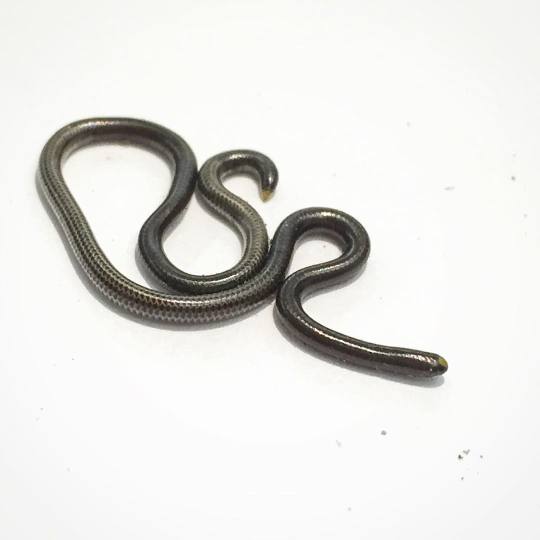
Epictia sp. (cf. subcrotilla), one of the smallest snakes of the world #snake #Ecuador #Leptotyphlopidae #threadsnakes
1 note
·
View note
Photo


Western Slender Blind Snake (Leptotyphlops humilis)
Also known as the Western Threadsnake or the Western Blind Snake, the western slender blind snake is a species of thread snake (Leptotyphlopidae) that is native to the southwestern United States, South Florida, and northern Mexico. L. humilis typically inhabits deserts, scrub, and other areas where the soil is loose.
Like other thread snakes L. humilis lives underground and has mostly vestigial eyes that have no real use for vision. L. humilis's diet is made up mostly of insects, as well as their larvae and eggs. They are pareticualry known to invade ant and termite nests to find food.
Classification
Animalia-Chordata-Reptilia-Squamata-Serpentes-Leptotyphlopidae-Leptotyphlops-L. humilis
Images: Eugene van der Pijll and Sam Murray
#Western Slender Blind Snake#Leptotyphlops humilis#Thread Snake#Leptotyphlopidae#Snake#Serpentes#Squamata#Reptilia#Chordata#Leptotyphlops#Mexico#North America#Blind snake#Western Thread snake#Western Blind Snake
262 notes
·
View notes
Text


Southwestern Blind Snake (Rena h. humilis), family Leptotyphlopidae, SW United States
photograph by Greg Lit
853 notes
·
View notes
Text

Long-nosed Worm Snake, Myriopholis macrorhyncha, family Leptotyphlopidae, Negev, Israel
photograph by Ilan Biel
81 notes
·
View notes
Text
Typhlops has Vestigial Eyes
How about some blindsnake/leptotyphlopidae/typhlopidae appreciation posts?
Yep. I love these guys. You should see the skulls. The kinesis is really, REALLY interesting. It's totally different from other snakes and quite derived in some cases. I'll try to put up some photos of the skulls as well.
Anyway, here's to tiny, fossorial snakes with lots of possibly ancestral characters. Leptotyphlopids and Typhlopids actually have vestigial pelvic girdles. Pretty cool little animals.
I'll put up a photo post of each. Might include Anomalepids if I don't get tired.
0 notes